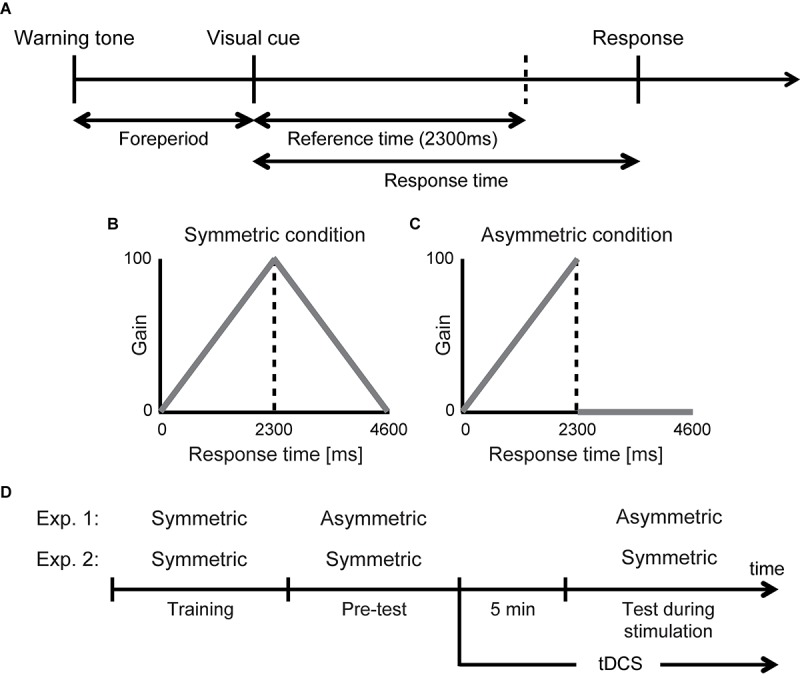FIGURE 1.

Experimental design and stimulation protocol. (A) Selective timing task. The participants were required to give a key press response after a foreperiod interval. The reference time was set at 2300 ms. In each trial, the response time was translated into a particular gain based on the following gain functions. (B) Symmetric condition. Higher gain was given as they could respond closer to the reference time. (C) Asymmetric condition. Within the reference time, they could receive higher gain as they responded closer to the reference time but they received no gain if they responded after the reference time. (D) Experimental design. Three experimental blocks (training, pre-test, test during stimulation) were conducted per stimulation protocol. There were three stimulation protocols (anodal stimulation over right DLPFC with cathodal stimulation over left DLPFC, cathodal stimulation over right DLPFC with anodal stimulation over left DLPFC, and sham stimulation). The participants performed the asymmetric condition or the symmetric condition receiving either one during stimulation. Each protocol was separated by 1 week. tDCS was started 5 min before the task in the test during stimulation block began and lasted for 15 min thereafter. In sham stimulation, tDCS was delivered only for an initial 40 s.
